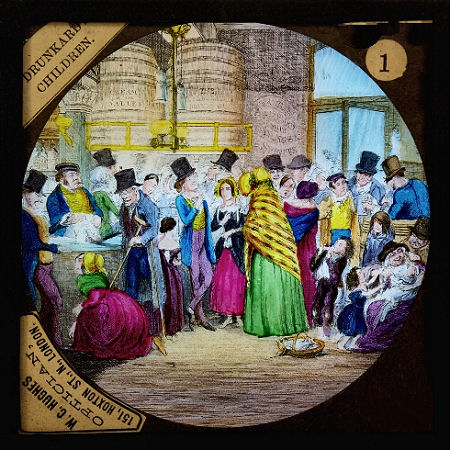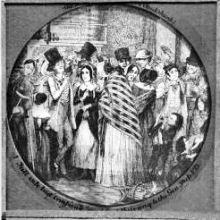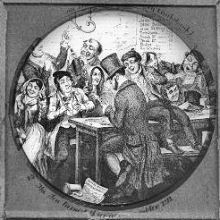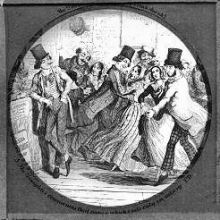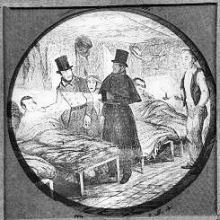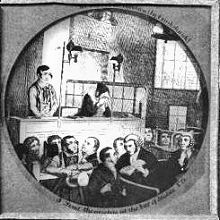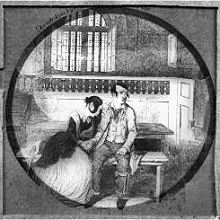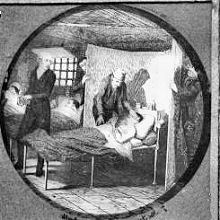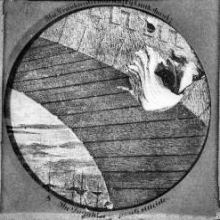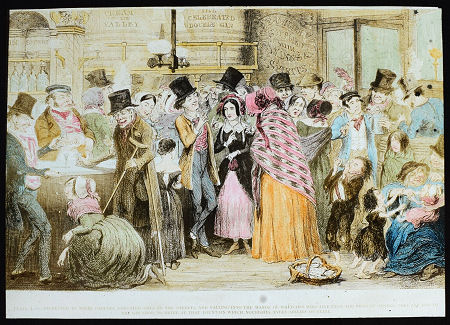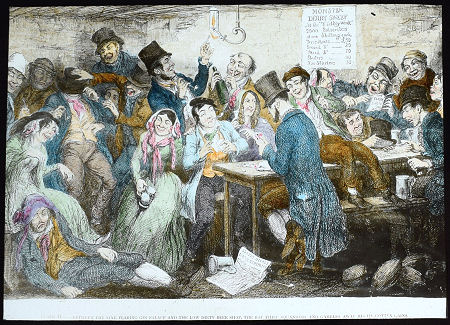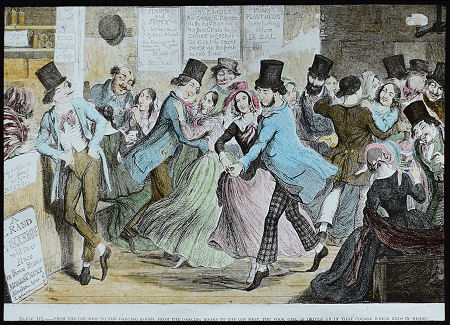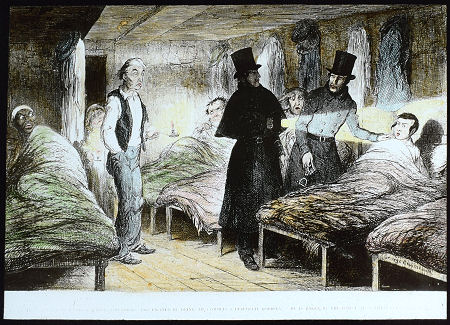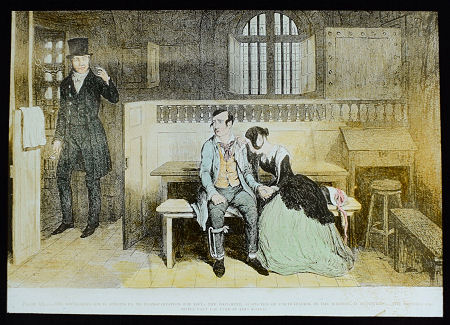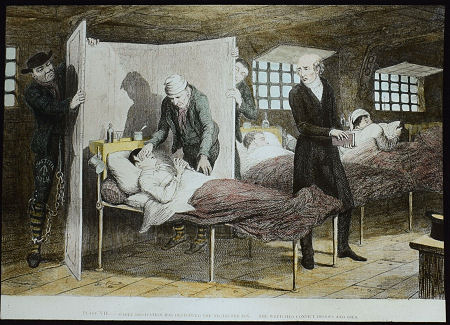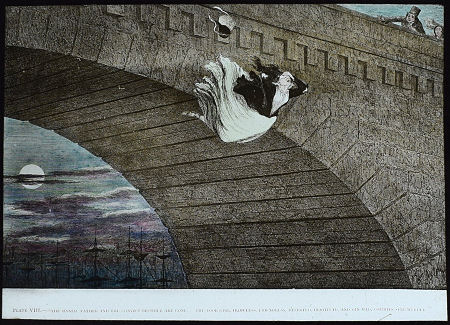|
The Bottle |
 Source: Encyclopaedia Britannica.
|
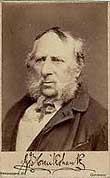 The
English artist, caricaturist and illustrator George Cruikshank was
born September 27th, 1792 in London. He started his career with satirical
political cartoons and later illustrated more than 850 topical and children's
books. His most famous book illustrations were for the novelist
Charles
Dickens in Oliver Twist (1838). He also published a number of books
himself. In the late 1840s Cruikshank, whose own father had died of
alcoholism, became an enthusiastic propagandist for
temperance. At that time he published a series of eight plates entitled 'The Bottle' (1847)
which sold almost 100,000 copies, and its sequel, eight
plates of 'The Drunkard's Children' (1848). Between 1860 and 1863 he painted
a huge canvas illustrating 'The Worship of Bacchus'. Cruikshank died February
1st,1878 in London. The
English artist, caricaturist and illustrator George Cruikshank was
born September 27th, 1792 in London. He started his career with satirical
political cartoons and later illustrated more than 850 topical and children's
books. His most famous book illustrations were for the novelist
Charles
Dickens in Oliver Twist (1838). He also published a number of books
himself. In the late 1840s Cruikshank, whose own father had died of
alcoholism, became an enthusiastic propagandist for
temperance. At that time he published a series of eight plates entitled 'The Bottle' (1847)
which sold almost 100,000 copies, and its sequel, eight
plates of 'The Drunkard's Children' (1848). Between 1860 and 1863 he painted
a huge canvas illustrating 'The Worship of Bacchus'. Cruikshank died February
1st,1878 in London.After the example of the etches of
Cruikshank's 'The Bottle'
this nice set of magic lantern slides
appeared. |
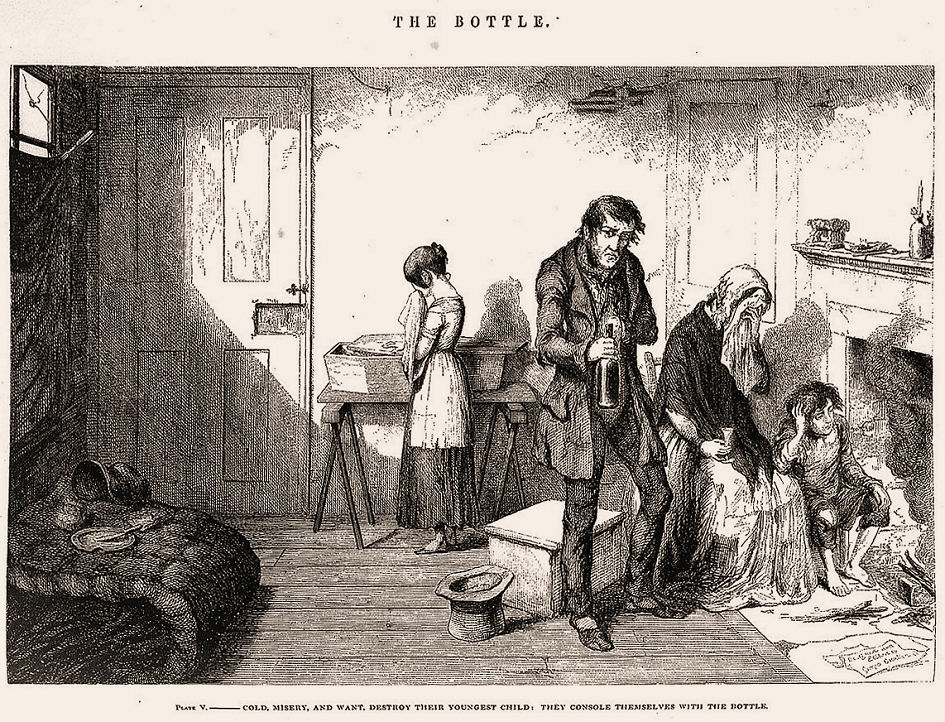 |
|
|
The
Bottle. In eight slides by George Cruikshank. Published for the artist
by David Bogue, 1847. Each of the prints bears in the lower foreground a
signature legend "Designed and Etched by George Cruikshank."
Also read: 'The man who drew the Drunkard's Daughter. The life and art of George Cruikshank 1792-1878'. Hilary and Mary Evans, London 1978. |
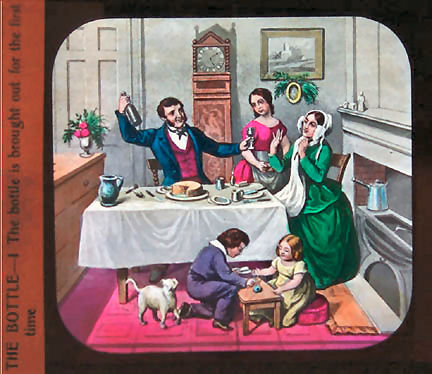
|
SLIDE
I. The Bottle Is Brought Out for the First Time: The Husband Induces His
Wife "Just to Take a Drop".
|
|
|
SLIDE
II. He Is Discharged from His Employment for Drunkenness: They Pawn
Their Clothes to Supply the Bottle. The room looks disorganized now. The open cupboard shows that most of the clothes have been pawned. Even the hungry cat looks for food but finds the plate empty.
|
|
|
|
SLIDE III. An Execution
Sweeps Off the Greater Part of Their Furnuture: They Comfort Themselves
with the Bottle.
|
|
|
|
SLIDE IV. Unable to Obtain
Employment, They Are Driven by Poverty into the Streets to Beg, and by
This Means They Still Supply the Bottle. The mother, father and older daughter stand at the side entrance of a liquor store, through which is seen the youngest daughter buying spirits. The son, barefoot and unkempt, begs from a respectably dressed woman while two healthy and prim children walk by.
|
|
| From the 1830s religious and idealistic organisations like the Salvation Army and the Temperance movement used the effectiveness of the magic lantern as a powerful weapon against the evils of drink and other 'bad habits'. |
|
SLIDE V. Cold, Misery,
and Want, Destroy Their Youngest Child: They Console Themselves with the
Bottle.
|
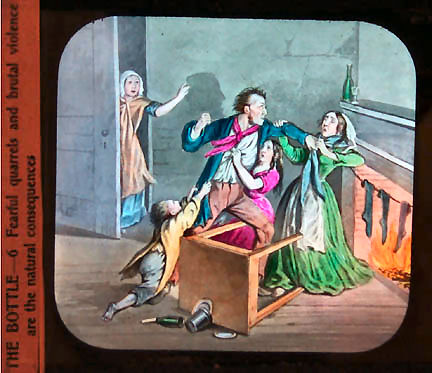
|
SLIDE VI. Fearful
Quarrels, and Brutal Violence, Are the Natural Consequences of the
Frequent Use of the Bottle.
|
|
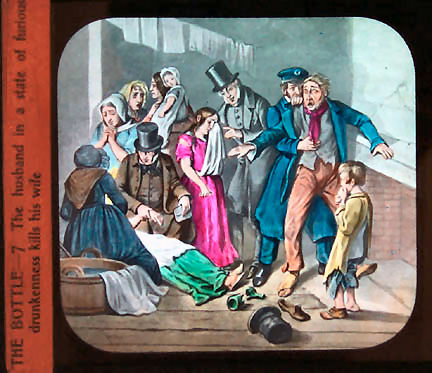
|
SLIDE VII. The Husband, in a
State of Furious Drunkenness, Kills His Wife with the instrument of All
Their Misery. A doctor takes the pulse of the murdered wife, one policeman interrogates the daughter while another officer seizes the hopelessly disturbed father.
|
|
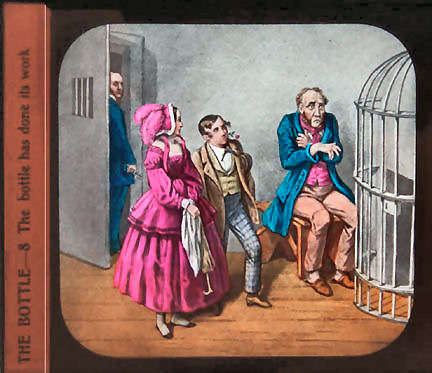
|
SLIDE VIII. The Bottle Has
Done Its Work - It Has Destroyed the Infant and the Mother, It Has Trought
the Son and the Daughter to Vice and to the Streets, and has Left the
Father a Hopeless Maniac. The two children, now rather gaudily and cheaply dressed, look at their father for the last time. The sprig of flowers in the mouth of the son suggests an impending course of dissipation. The cage is placed there to prevent prisoners from harming themselves.
|
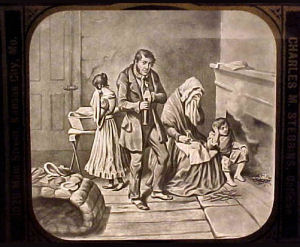 |
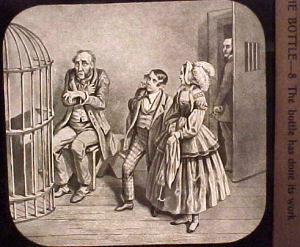 |
Black and white version of the Bottle-series published by Charles M. Stebbins, optician. Slides measure 3 1/4 by 4 inches (10 x 8.2 cm). |
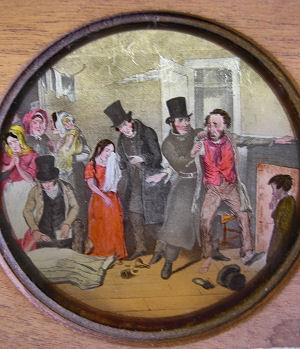 |
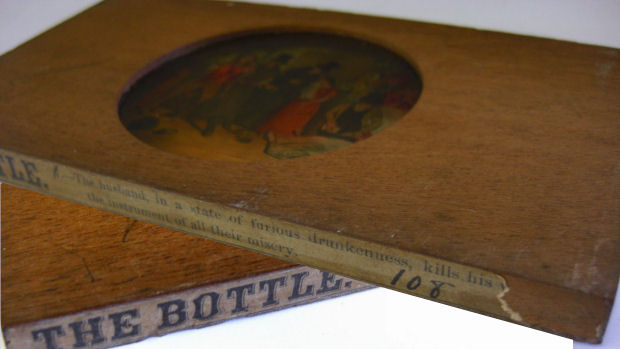 |
|
|
The same pictures from the sets above, now on a set
of wooden frame slides. |
||
|
For those who wished to paint their slides
themselves but were not really an artist, Brodie & Middleton, 79 Long
Acre, London, sold more than thirty sets of lantern slides with only the
outlines of the pictures on glass, prepared for colouring. This rendered the work exceedingly easy to the amateur painter.
One of those 'do-it-yourself' sets shows the dramatic story of The Bottle
(1876).
|
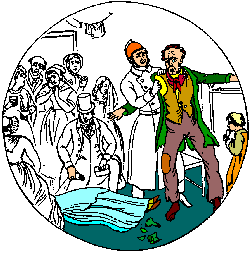 |
|
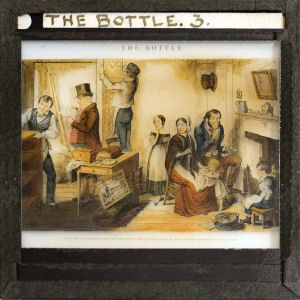 |
An unknown manufacturer released this set of lantern slides depicting Cruikshank's original prints, complete with accompanying captions. Size 8 x 8 cm. | |
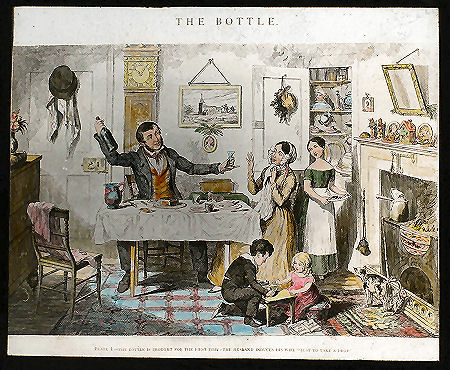 |
 |
 |
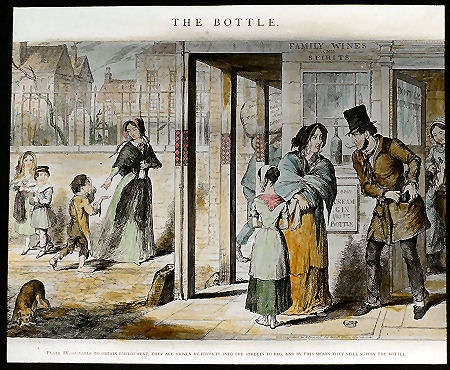 |
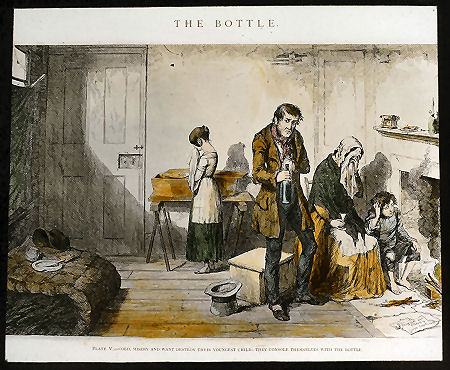 |
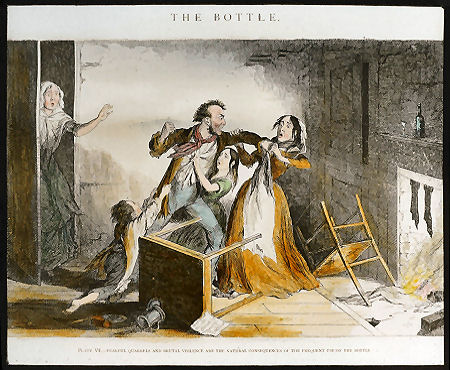 |
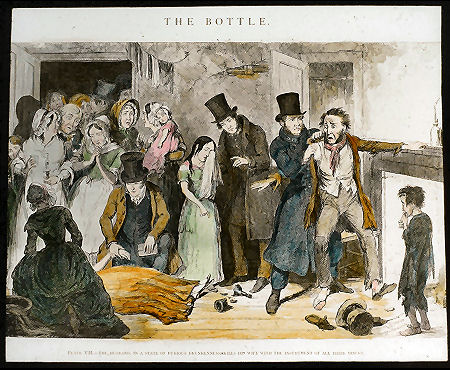 |
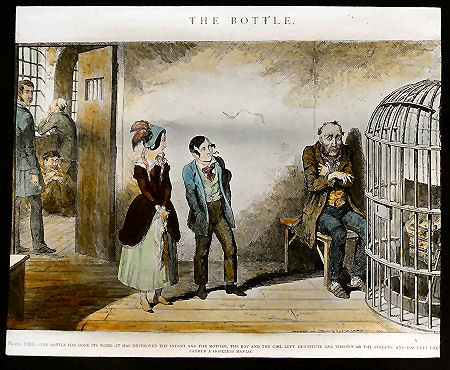 |
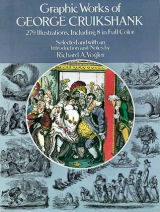
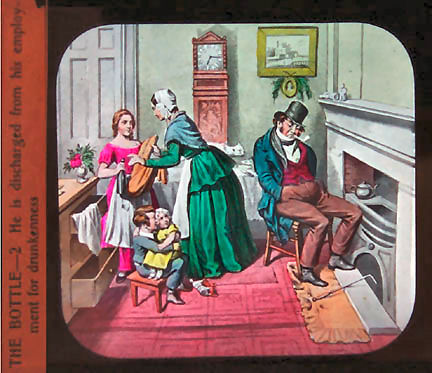
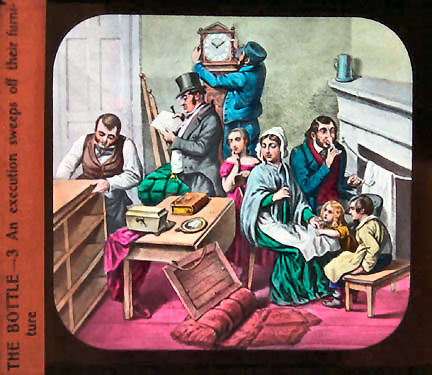
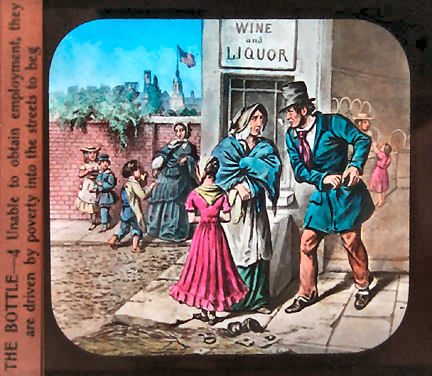
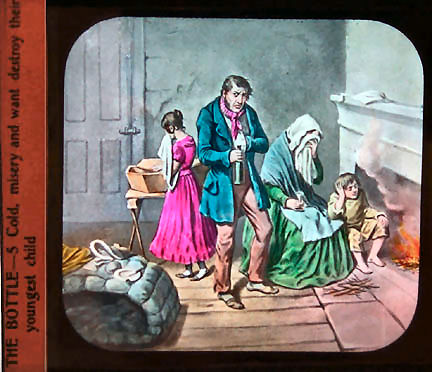
 Probably
you're very anxious to know what has become of the drunkard's children. In
1848 Cruickshank's sequel, THE DRUNKARD'S
CHILDREN, appeared in print and later as a series of lantern
slides, but because of the presence of prostitution in the story, it was
considered less suitable for young viewers.
Probably
you're very anxious to know what has become of the drunkard's children. In
1848 Cruickshank's sequel, THE DRUNKARD'S
CHILDREN, appeared in print and later as a series of lantern
slides, but because of the presence of prostitution in the story, it was
considered less suitable for young viewers.